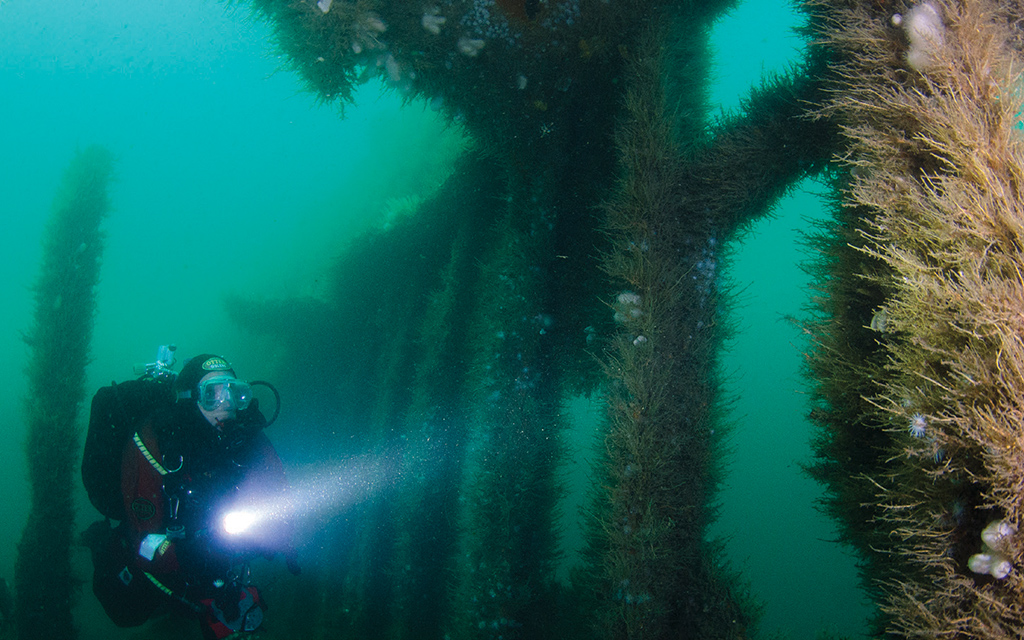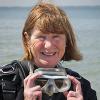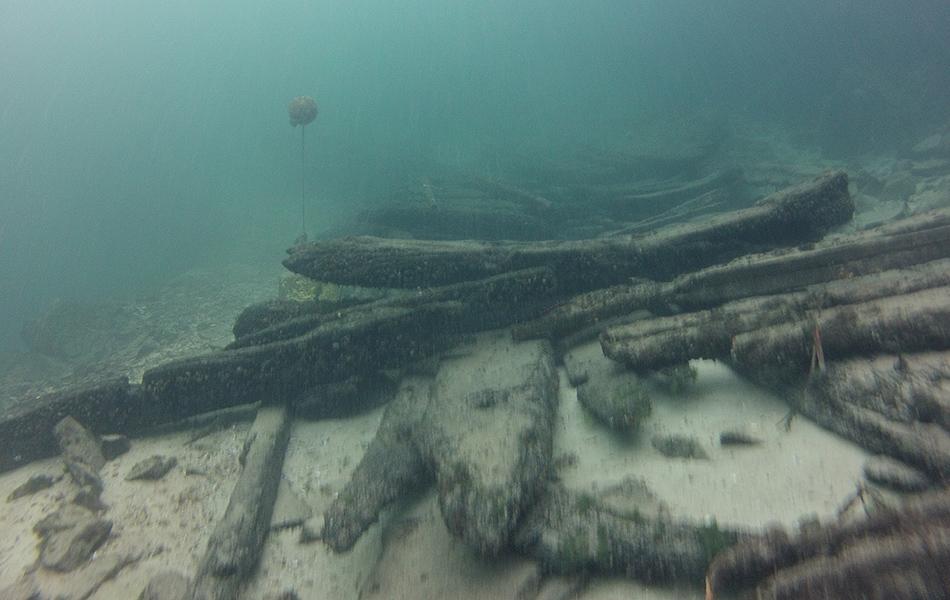
Photo credit: Simon Rogerson
Jane Maddocks has more advice for ways to turn your club’s favourite wreck into an ongoing science project.
Recently, there has been a realisation by the authorities that shipwrecks are home to a substantial range of marine life species. As divers we knew this, and I suspect some of us were amazed that it had become a news story.
The challenge is that we do ‘know’ this, but the actual numerical and species evidence is just not there. Yes, we have videos, we have logbooks, and we have all those amazing posts on social media showing octopuses in the Western Approaches hiding under metal plates.
as BSAC divers, we have an opportunity to dive our favourite wrecks and start to record what marine life we find on those wrecks
If we want to take this chance to contribute to an evidence-based assessment of how rich those species habitats we call wrecks can be, we need to be consistent with what we report and how we do it.
We have a lot of anecdotal evidence. Now, as BSAC divers, we have an opportunity to dive our favourite wrecks and start to record what marine life we find on those wrecks. It could be a great branch project.
Your branch’s favourite wreck could be dived several times in the year. During the dives, the members who love marine life but are not so keen on wreck dives, can record the life in various parts of the wreck. This could be developed by some additions to the normal visual and camera records.
Here’s how it could work: A water temperature check at each observation point, a species count, and a visibility check could then be complemented by images and put into a simple database that suits the way your club works. You could even make your own Secchi dish using a 12-inch vinyl record, a ring bolt and thin line to confirm any changes in visibility.
If you love scientific instruments, get a simple water acidity meter for a few quid. Take water samples in little pots at your species recording points and, once back on the surface, see if there is any change in water acidity during the years as you continue to monitor your wrecky marine life habitat.
As recreational divers, we can carry out competent science; we can dive for science, record results, and submit them to specific organisations for verification and entry onto a database that will provide evidence for future work.
It helps if you have done our BSAC Marine Life Awareness course. Keep an eye out for our new Underwater Surveyor course that has been developed in partnership with Seawilding. You could also take the opportunity to start your Seasearch journey, investigate the Seahorse Trust, and look at how you could contribute your marine species findings to data recording giants like iNaturalist and iRecord.
[As a personal aside, I try to avoid the term ‘Citizen Science’. To my mind, all science should be competent science, whoever does it. It is my opinion that sometimes career scientists use Citizen Science as shorthand for ‘not very good science.’]
In the context of providing evidence of shipwrecks as supportive habitats for marine life, BSAC divers are capable of competent science, by which I mean identifying, recording, and reporting marine life to relevant organisations.
I am currently starting to create a database that will allow us to record our findings in a way that we can contribute to more specialised projects. As always, BSAC members have offered help in creating something that we can use. It will take a bit of time because it needs to be robust. Until then I will be setting up a folder for each of my special wrecks, including:
- Name and position of wreck-history of the wreck-length of time underwater
- Date of dive; number of marine life divers
- Sketch or images or video of specific part of wreck
- Tidal information
- Water temperature
- Water acidity sample results
- Horizontal visibility (with Secchi dish)
- Specific area of wreck, e.g., stern port quarter
- Target species: (count and condition for each of the target species on that part of the wreck)
- Images of target species
- Depth of sample
No-one goes home until the record sheets are filled in! I then input it all onto my laptop.
Article ‘Portrait of a shipwreck’ by Jane Maddocks first published in SCUBA magazine, Issue 141 March 2024.

 Author: Jane Maddocks | Posted 25 Mar 2024
Author: Jane Maddocks | Posted 25 Mar 2024



